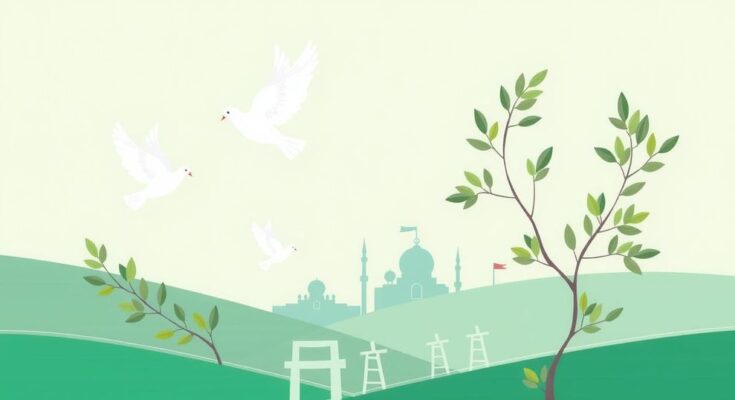Syria’s interim President Ahmed al-Sharaa has appointed a new government dominated by his allies, replacing the previous caretaker authorities. The cabinet includes key figures from the past regime, one woman, and promises protection for minorities amidst ongoing sectarian challenges following Assad’s ousting. Concerns about power concentration and minority rights remain prominent.
On March 29, 2025, Syria’s interim President Ahmed al-Sharaa unveiled a new transitional government heavily composed of his close allies, replacing the caretaker authorities that had been in place since the ousting of Bashar al-Assad. This announcement, delayed from earlier in the month, occurs amidst international demands for a more inclusive Syrian transition following recent sectarian violence.
The newly formed government retains several key figures; Foreign Minister Assaad al-Shaibani and Defence Minister Murhaf Abu Qasra maintain their positions, while Anas Khattab has been appointed as the interior minister overseeing general intelligence. Notably, Hind Kabawat, a prominent opposition figure and a member of Syria’s Christian minority, has become the first woman appointed by Sharaa as the minister for social affairs and labor.
Additionally, Raed al-Saleh, head of the White Helmets rescuers who operated in rebel territories, has been appointed as the minister of emergency situations and disasters. The Islamic-led authorities currently governing Syria have pledged to ensure the protection of minority communities, especially in light of recent clashes between Assad’s Alawite community and Sunni rebel militias.
Previously, in December, a caretaker government led by Mohammad al-Bashir was put in place to guide the country until the formation of a new cabinet, which had originally been announced for March 1. Sharaa, the leader of the Islamist group Hayat Tahrir al-Sham responsible for Assad’s removal, assumed the interim presidency in late January.
This month, Sharaa also enacted a constitutional declaration outlining a transitional period of five years. However, some experts and human rights organizations have raised concerns that the declaration centralizes power within Sharaa’s administration, lacking adequate safeguards for minority populations.
In summary, President Ahmed al-Sharaa has established a transitional government primarily filled with allies as Syria faces the aftermath of Bashar al-Assad’s regime. While the inclusion of minority representation and promises of protection is noteworthy, concerns regarding the concentration of power and inadequate protections for minorities persist. This transitional period aims to facilitate rebuilding after years of civil strife, yet its effectiveness remains to be seen.
Original Source: www.thehindu.com




